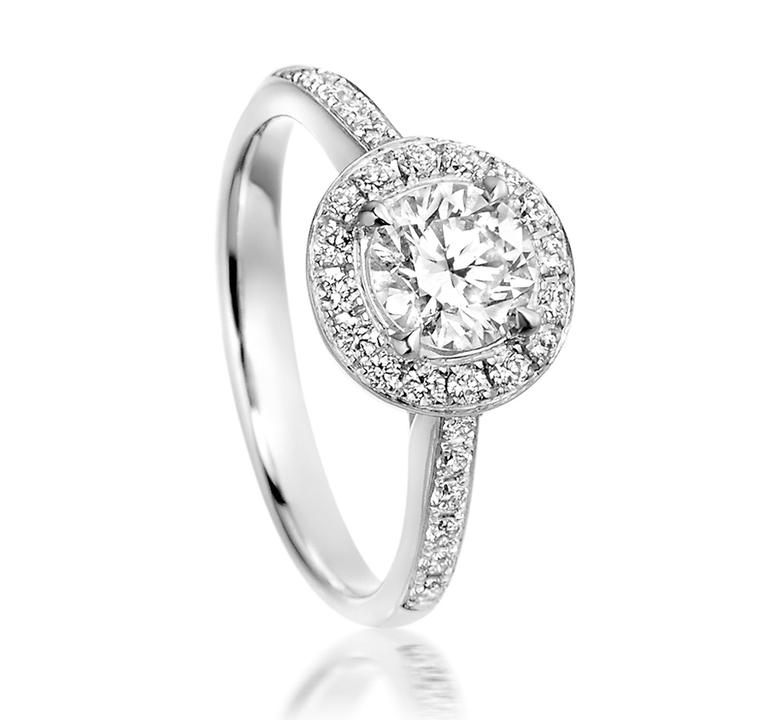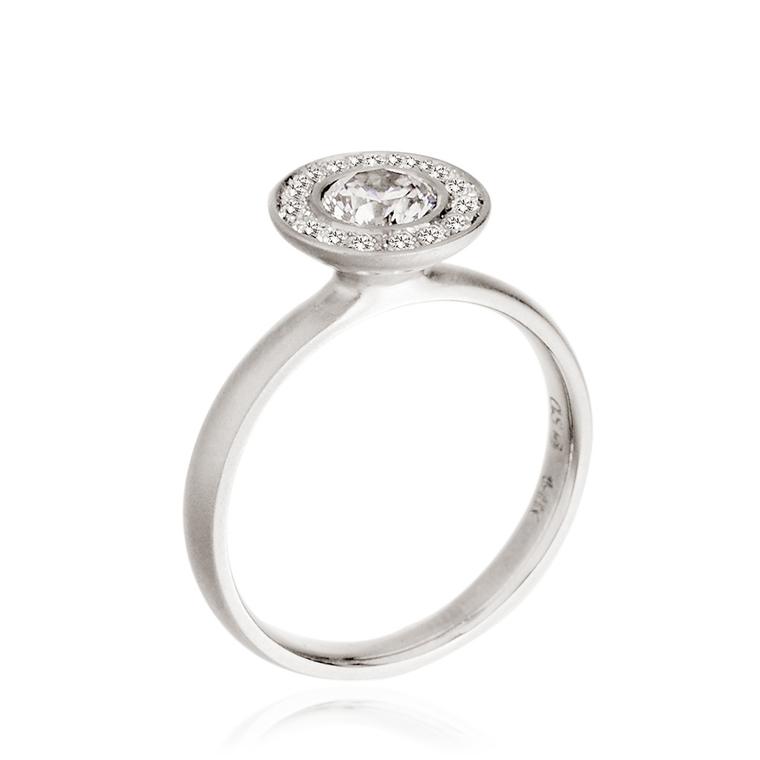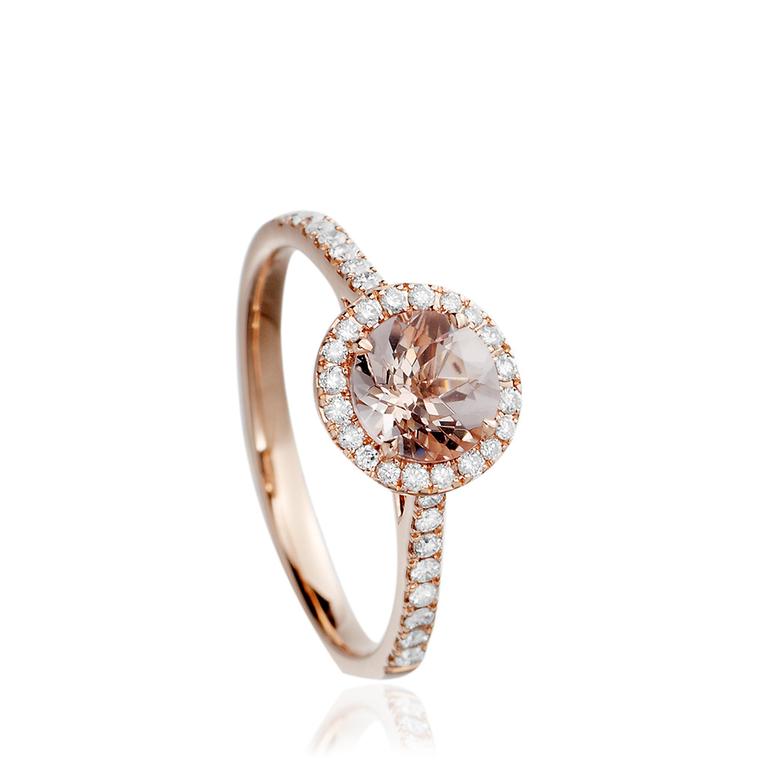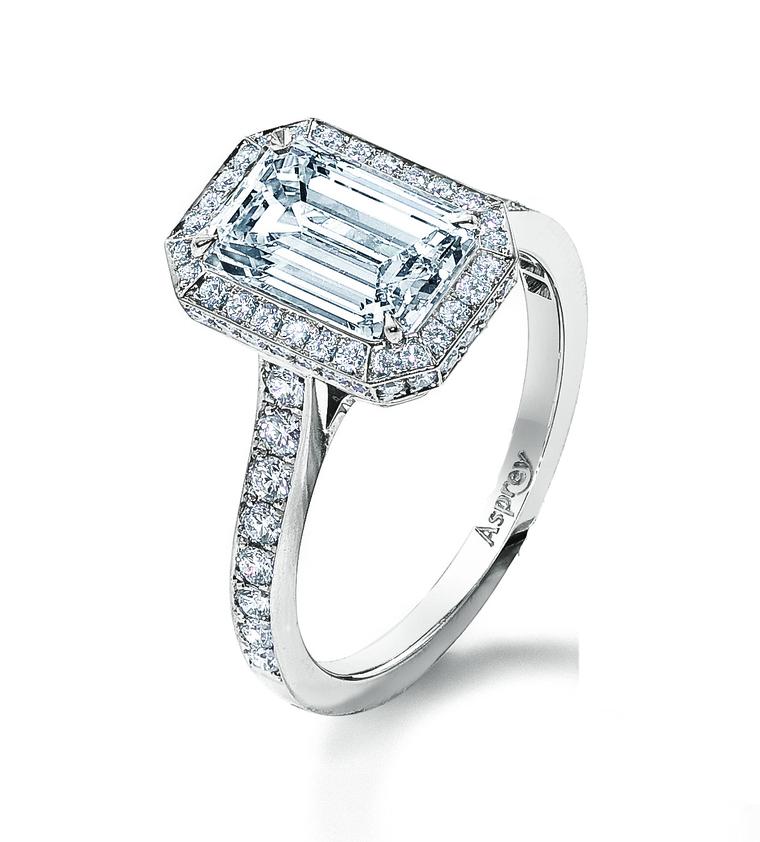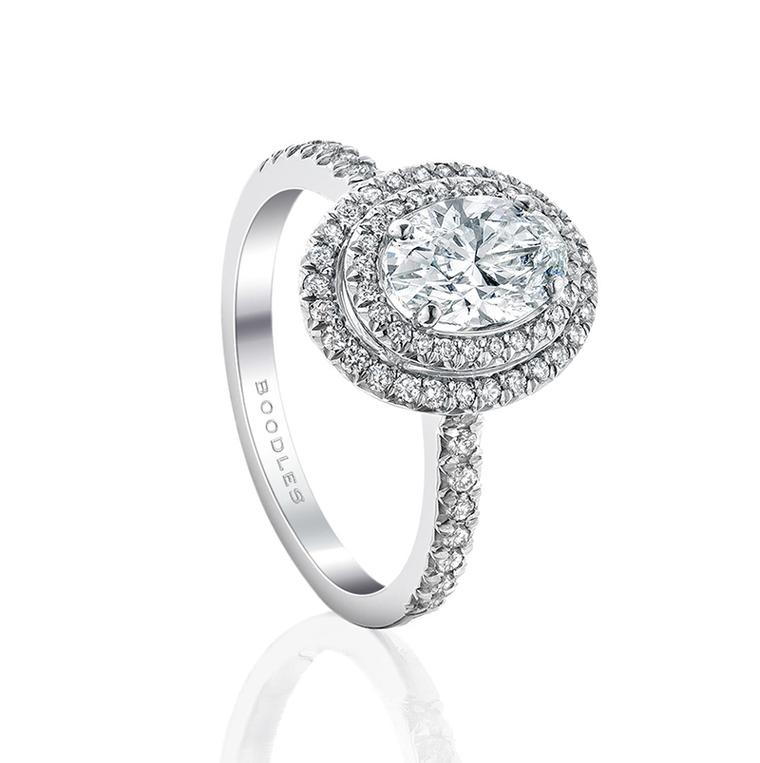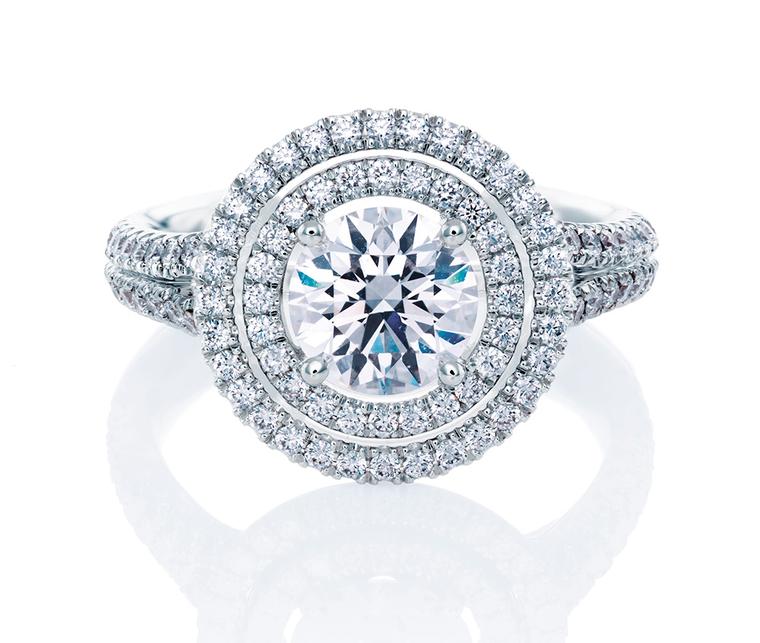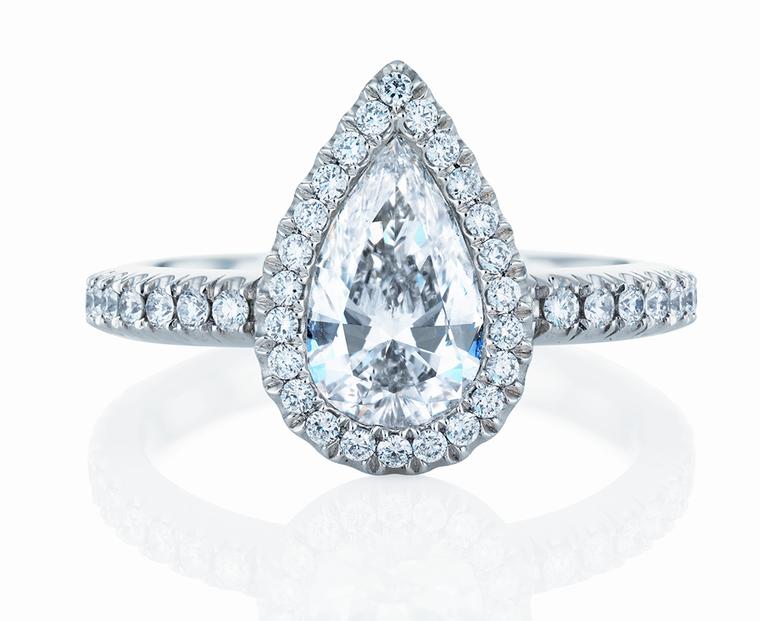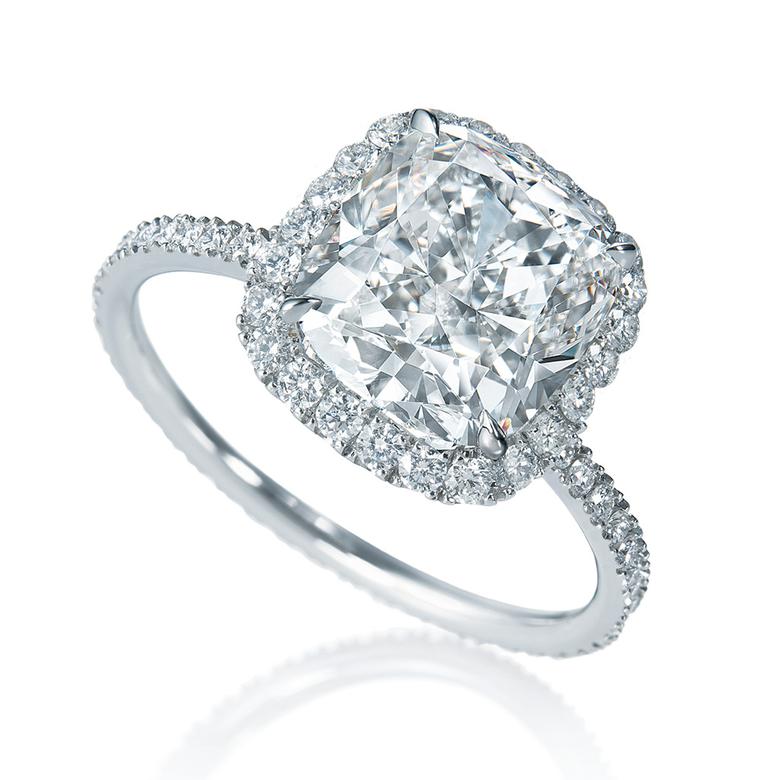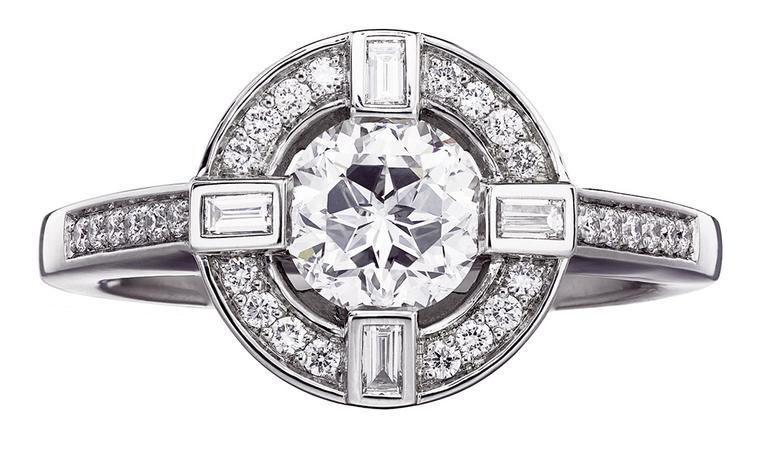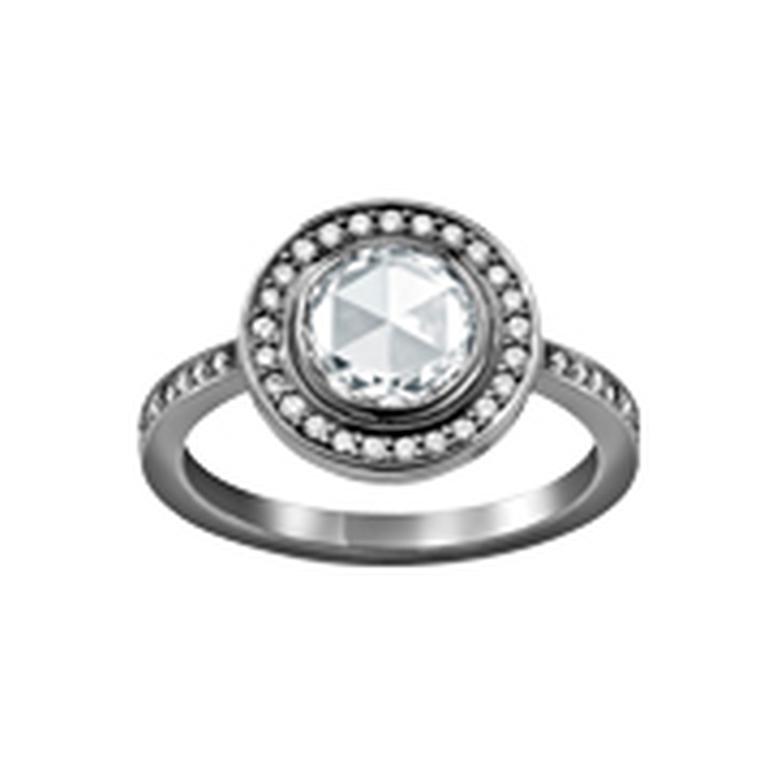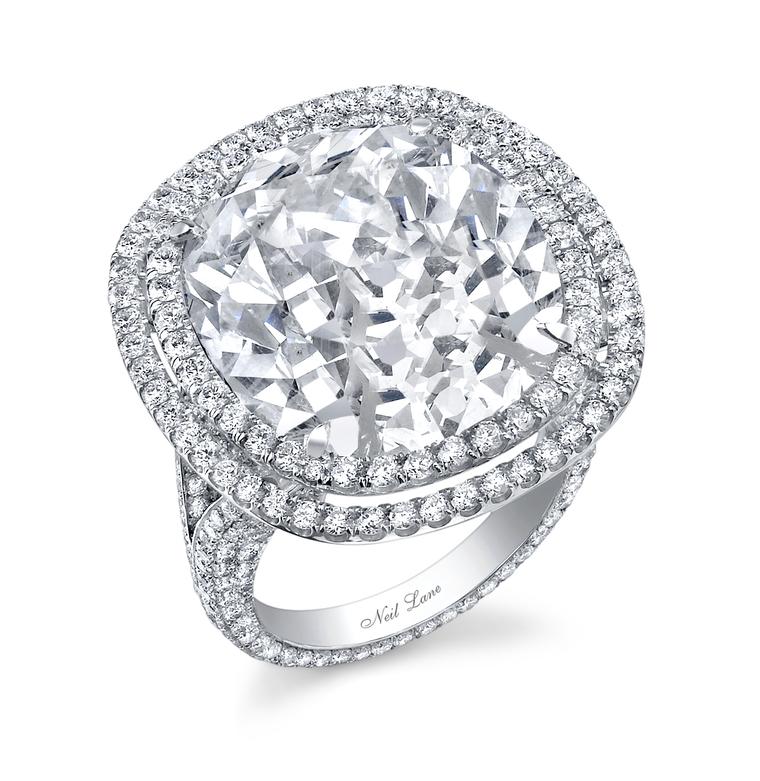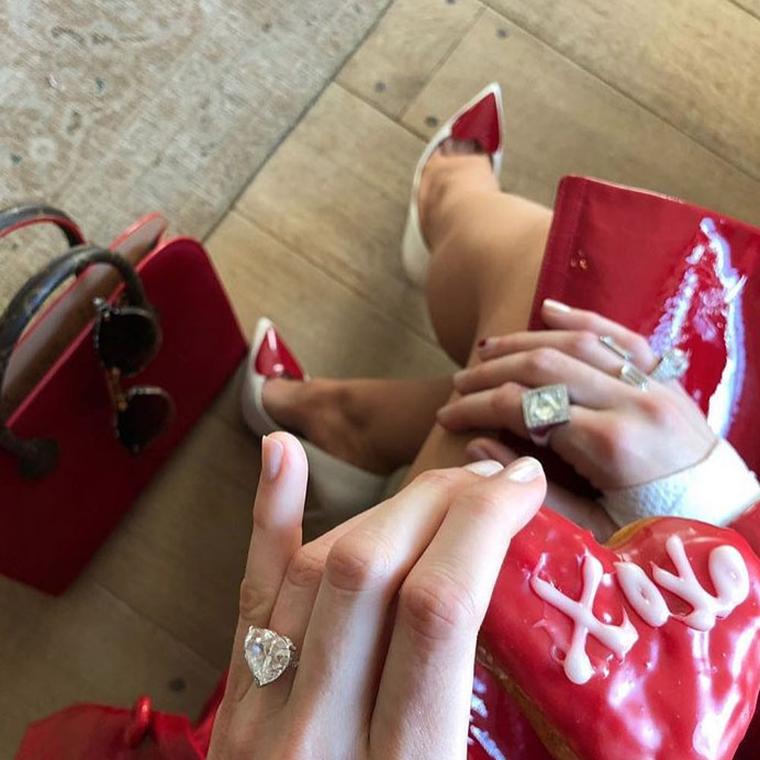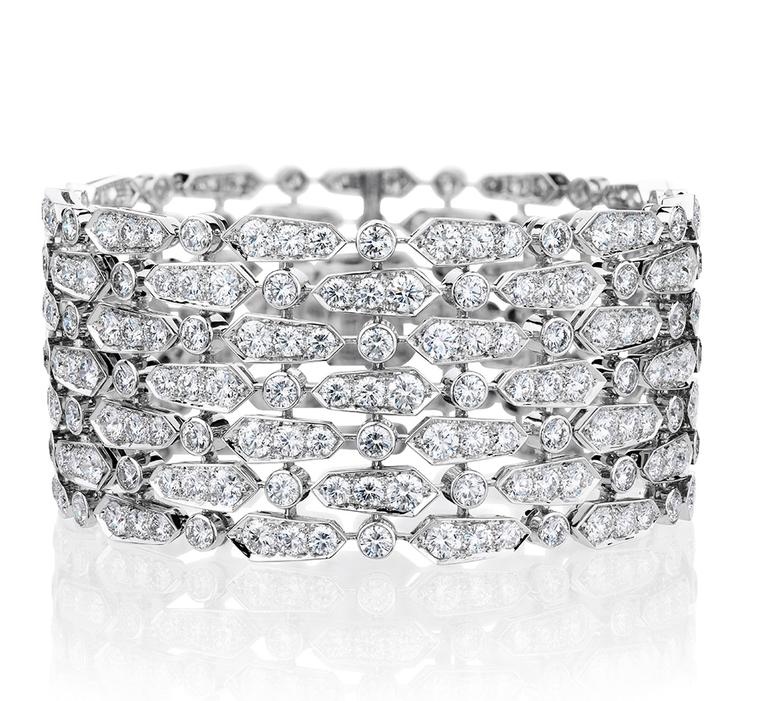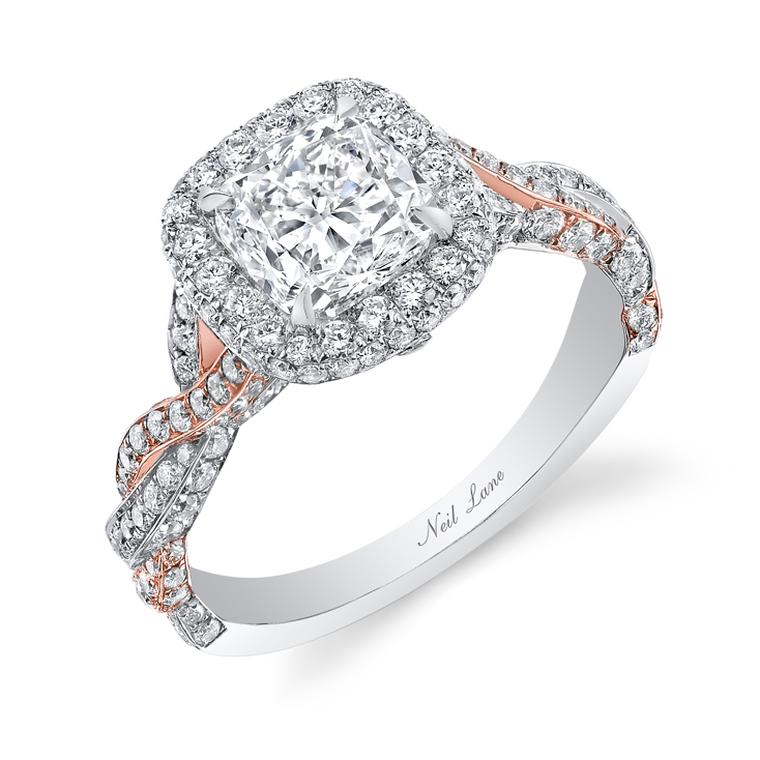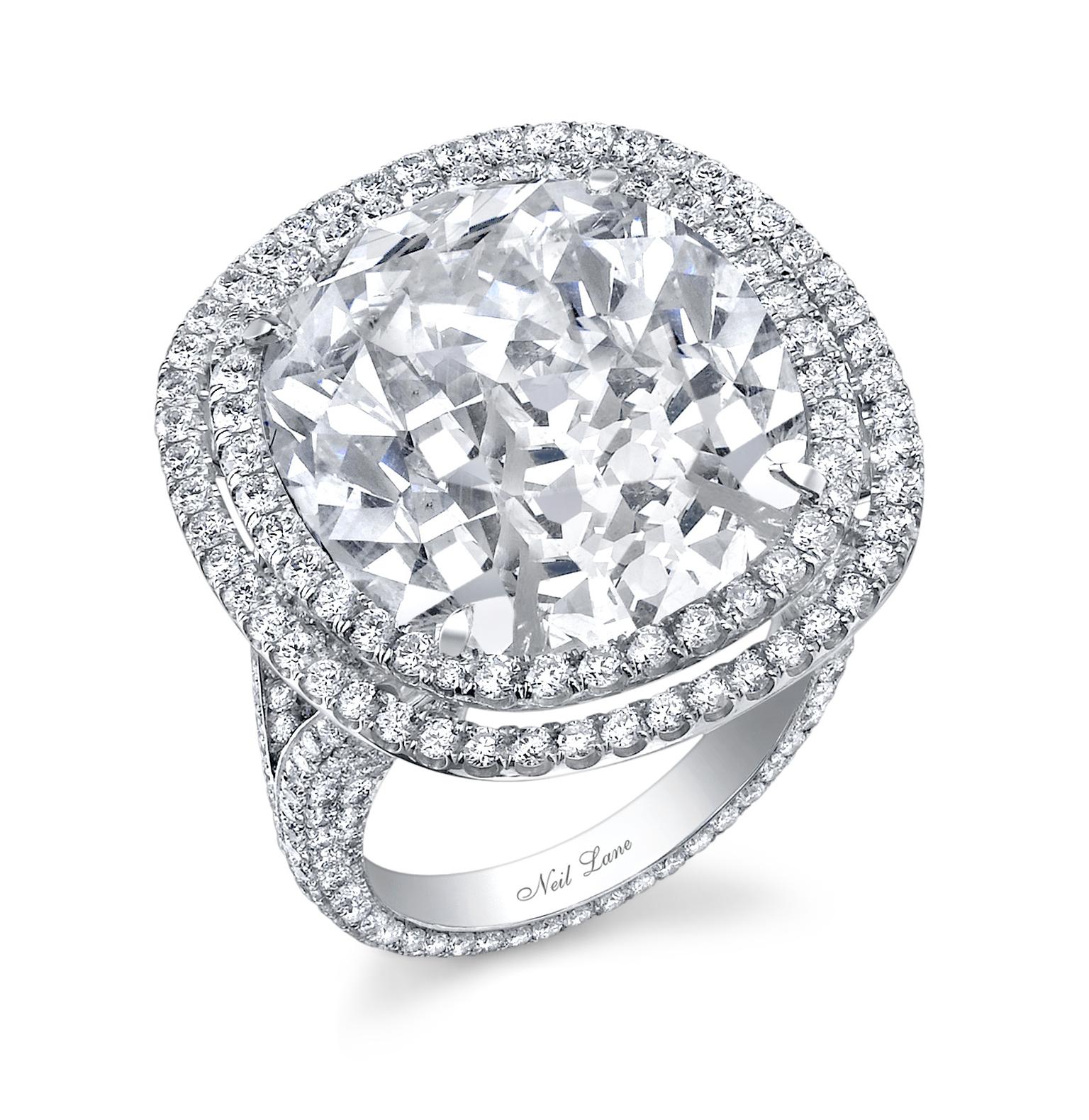
What with Angelina Jolie's custom-designed, table-cut diamond engagement ring, Reece Witherspoon's magnificent Ashoka diamond ring and Jennifer Aniston's whopping 8 or 9ct solitaire, there has been no shortage of celebrity finger candy to fawn over recently. So when Sherlock Holmes director Guy Ritchie proposed to his model girlfriend Jacqui Ainsley earlier this month, all eyes turned, inevitably, to her ring.
Crafted by celebrated Hollywood jewellery designer Neil Lane, Ritchie commissioned the 5ct, old European-cut diamond ring that now graces Ainsley's left hand. Definitely no shrinking violet, the ring - with a double halo of pave diamonds surrounding a central stone - is big and bold, but with an elegant, vintage silhouette that makes it seem less show-offy than other rings of a similar size. "Guy wanted something cool, a little vintage and romantic," explains Lane. "It has an Edwardian feel."
Ritchie got the cool bit right. While talking about trends in engagement rings is a tricky business - no one wants a ring that will look passé in five years' time - this halo style, featuring a single or double border of diamonds, has been steadily growing in popularity. It has all the ingredients that modern brides are looking for - crazy amounts of sparkle, classic styling (crucial if you're worried that your ring might go out of fashion) and a vintage feel - without shouting "look at my huge diamond ring".
Since Georgian times, stones have been set with a surround of diamonds, but the style wasn't popularised until the Victoria era, when diamond halos became an elegant choice for brides-to-be of the period. The term "halo" is a recent invention, but the reason this setting is in vogue again remains the same: it makes the central stone appear bigger and emphasises the ring's sparkle. Combine the pave diamonds with a unique diamond cut, as Ritchie has (the old European is considered the father of today's round-brilliant cut), and you have something with real depth of character.
If you're thinking a halo-style engagement ring could be for you, whet your appetite with some of our favourites, pictured below. Many fine jewellers have single or double halo-style rings in their collections. Whether you're looking for the eye-popping sparkle of a double halo - if so, you will love De Beers' platinum Aura Double Halo ring (from £6,750) or Boodles' Double Vintage Oval-Cut engagement ring (from £8,200) - or prefer a modern-day classic - in which case you'll approve of Van Cleef & Arpels' Icône in platinum (from £5,250) and Harry Winston's Cushion-Cut Dicropave Diamond ring (POA), also in platinum - the halo is here to stay.
De Beers has surrounded a teardrop-shaped central diamond with tiny precious stones in its Aura Pear ring in platinum (from £6,000) and created something pretty spectacular, while Garrard and Asprey have distilled the very essence of vintage style into their halo rings. Asprey's classic Victorian Mount halo ring (£33,500) is set with a stunning emerald-cut diamond, while Garrard's antique-style, platinum engagement ring (POA) features four baguette-cut diamonds set into the pave-diamond halo. Canadian jewellery designer Anne Sportun has taken the classic halo and turned it on its head with her modern Diamond Engagement Ring in 18ct white gold (£5,750), or you can break with tradition and eschew diamonds in favour of a different stone. Astley Clarke's Morganite Ring in 14ct rose gold (£1,250), set with a halo of pave diamonds, is a warm reminder that coloured stones are a pretty alternative for an engagement ring.
If, however, you're looking for an unusual diamond cut like the one chosen by Guy Ritchie, Solange Azagury-Partridge may have the ring of your dreams. Her offbeat 18ct white gold halo ring, part of the new Tough Love collection, is set with a central rose-cut diamond, one of the original, antique diamond cuts believed to date back to the 16th century.


